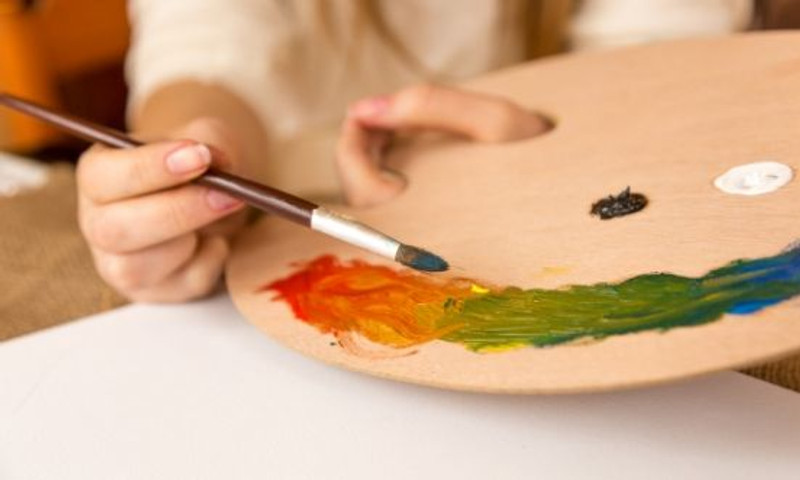Choosing your palette is one of the single most important things to consider when it comes to painting. An individual creates a painting, contrary to what some may believe, not by lines, but by illusions via color. You want to understand how to use different colors to draw out the light and depth created through careful brush strokes. It’s the estimation of some that a palette shouldn’t be too extensive. Many artists agree that 30 different tubes of color squeezed out onto a piece of wood does not make a masterpiece.
The Limited Palette
We’d have to agree with the idea that a limited palette comes with many benefits. New artists can truly begin to understand the laws of color theory through studying how they can create a scene from only a few initial options. It is possible to create a diverse palette while having only a few staple colors in your possession. If buying a readymade paint these colors would be recommended:
- Cadmium red
- Ultramarine blue
- Cadmium yellow
- Burnt Sienna
- Titanium white
But what if you want to make your own paints from our nontoxic pigment selection? There are a few things that you may notice regarding the colors above. One is that it contains the three primary colors. However, Cadmium colors are not nontoxic. In addition, there may be particular shades of red, blue, or green that you may prefer for your basic palette. Here are some ideas from our pigment colors to expand your selection to create your own paint:
From our Primaries Category
- Primary Red Cinnabar (an orange under-toned red)
- Medium Red Crimson (a magenta under-toned red)
- Medium Yellow Sun (a primary yellow)
- Primary Blue or Monte Carlo Blue (pigment blue 15)
- Monte Carlo Green or Medium Parrot Green
From our Natural Earth and Ochers Category
- Burnt Sienna
- From our Oxides Category
- Ultramarine Blue (red shade)
- Titanium White
- Viridian Green
There’s no black listed above, as it’s an optional addition to your palette. Some find it useful, but you can create dark and rich shades using the colors we’ve listed. A white, however, is essential. You’ll need it for lightening shades and creating highlights in a piece.
You can even limit your palette to three colors alone—a cool tone, a warm tone, and white. This can be a touch more challenging, but many artists swear by the three-color rule. The cool and warm tones will work together to create dimension and space. The cool creates distance and the warm pulls an object out toward the front of a piece.
The Benefits of Minimalism
There is beauty in simplicity. These smaller palettes are going to aid your growth as an artist while narrowing down your options in a way that’s going to benefit your artwork. By putting a few shades onto your palette and combining them to make more, you’re adding cohesion into your piece. There can be a variety of shades in your work that will marry in a particular, pleasing way. It’s also beneficial to note that fewer colors mean that you’re utilizing the space you have when traveling with your supplies. Many painters enjoy plein air or travel to a studio, and the fewer colors you have, the lighter your load will be.
It’s Good for Your Wallet
Beginners will benefit from purchasing the basics and building their collection from there. If funds for purchasing art supplies are limited, creating your own paint and with basic colors to create a palette can be an easier investment. Earth Pigments offers a stunning array of pigment powders, including a set of primary pigments that will help to create a well-rounded set. These will last you a considerable amount of time and working with basics can expand an artist’s knowledge and feel for color.

